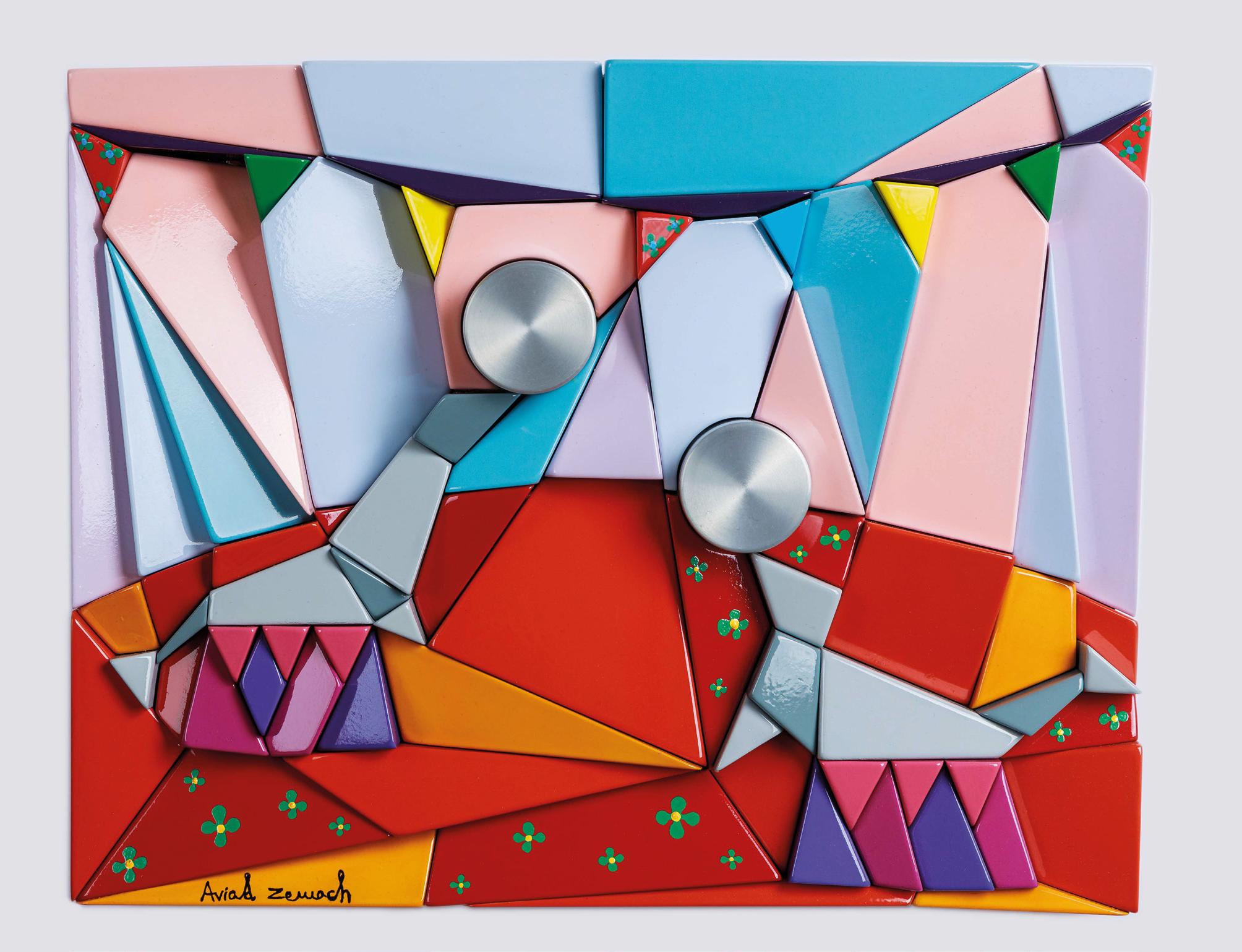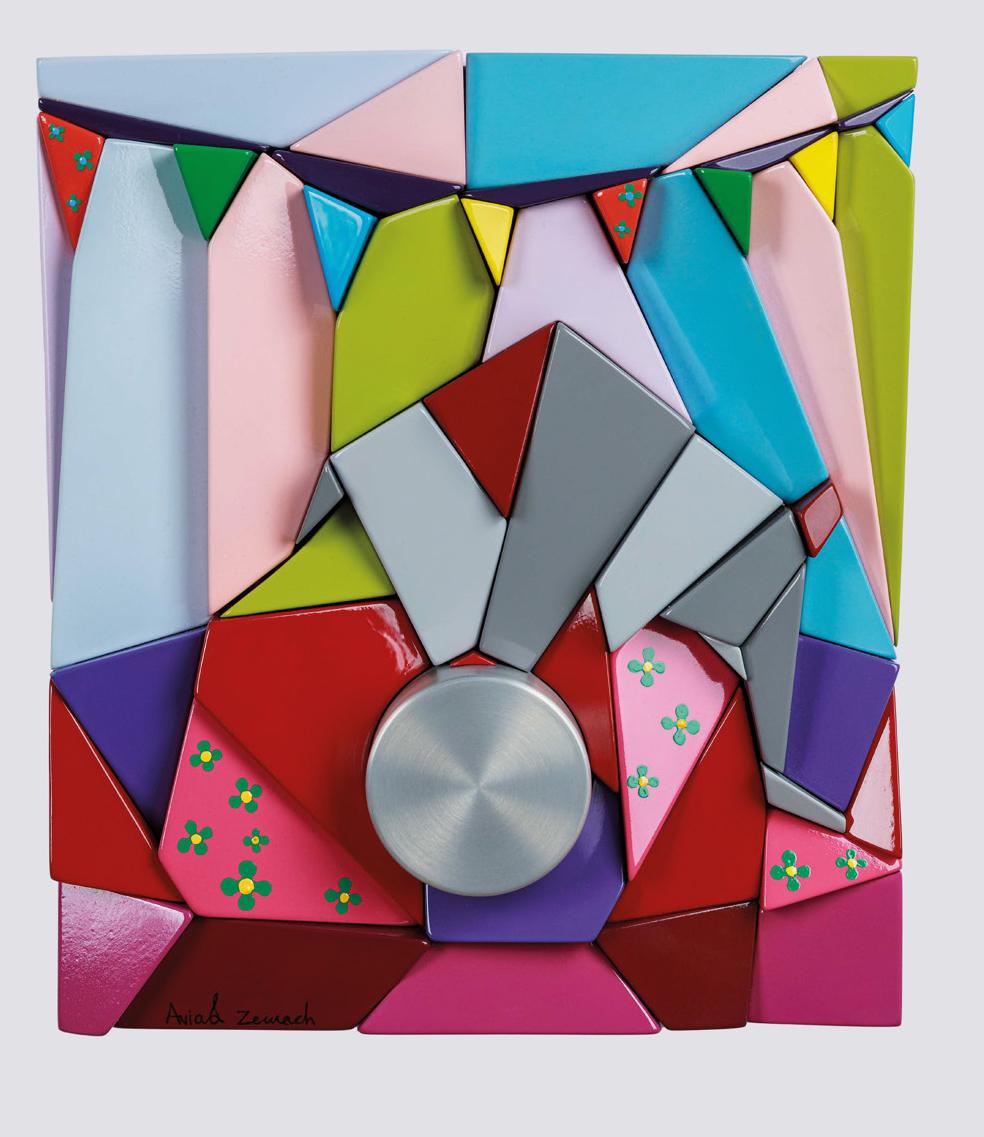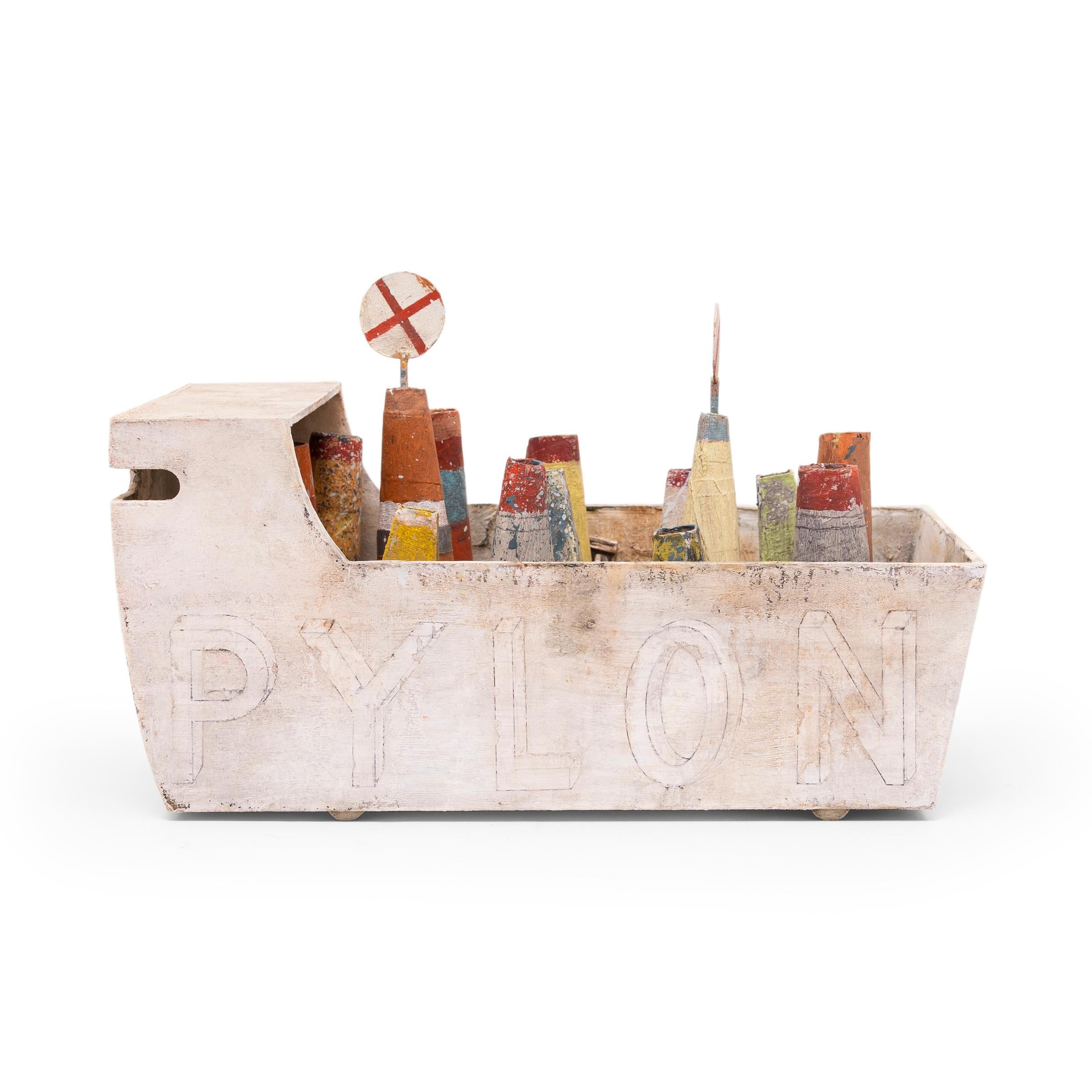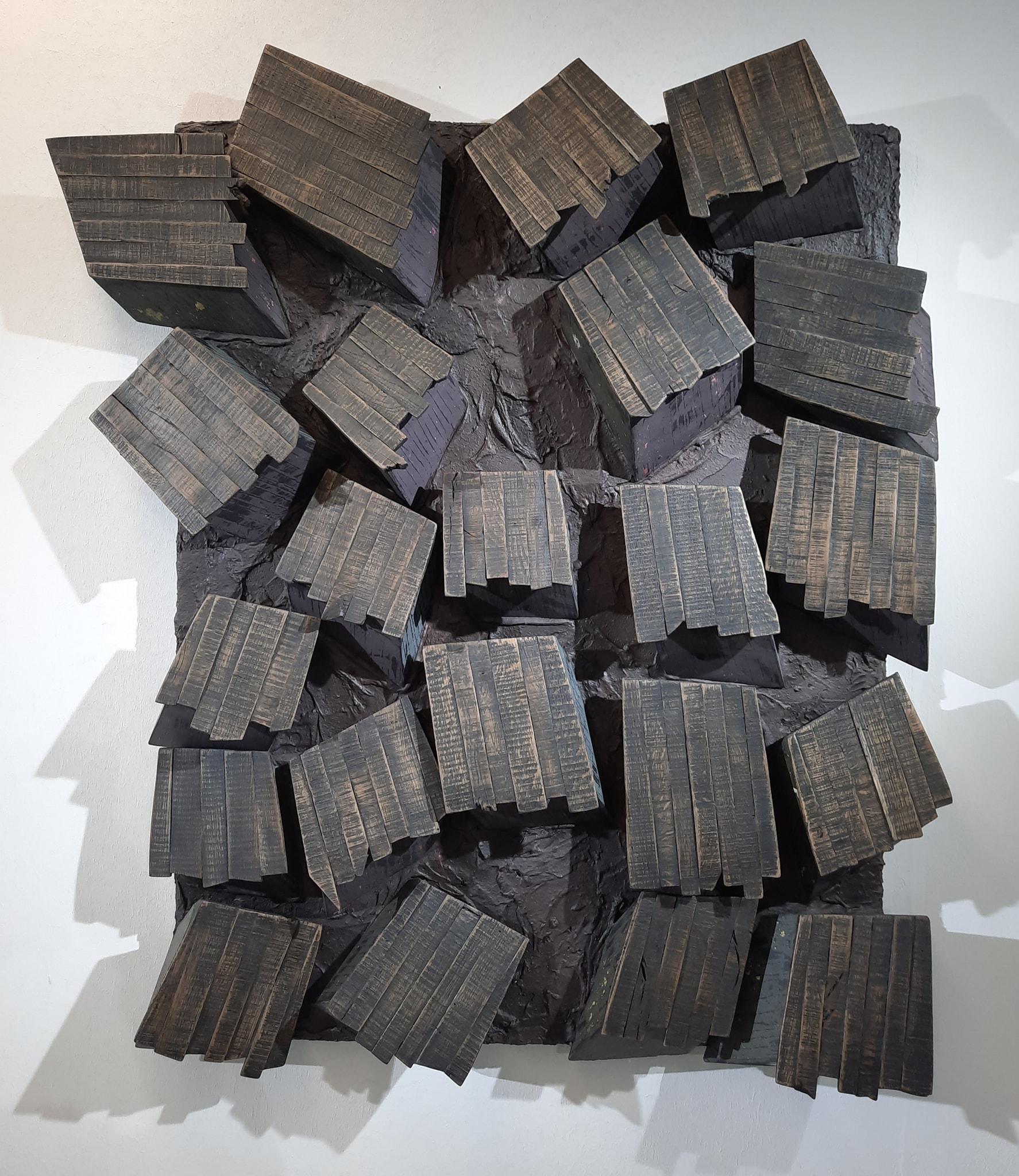Items Similar to "Tropical Parrot with Woman, " Corneille, Carved Wood Sculpture with Bird
Want more images or videos?
Request additional images or videos from the seller
1 of 2
Corneille"Tropical Parrot with Woman, " Corneille, Carved Wood Sculpture with Birdcirca 1970
circa 1970
About the Item
Guillaume Cornelis van Beverloo (Corneille)
Tropical Parrot with Woman, circa 1970
Signed: Corneille
Edition Number: 6 of 8
Constructed and Painted wood
39" high x 40 1/2" wide x 6" deep
Edition of 8
The Dutch artist Corneille created lyrical, expressionist paintings bursting with color and was one of the founders of the postwar European art movement known as Cobra.
Corneille was best known for radicalizing the conservative Dutch art world in the early 1950s, making modern art not only acceptable, but embraceable as well. He placed familiar subjects — birds, cats, women and landscapes — in mythological and often childlike contexts, imbuing them with spontaneity and bright, sensual reds.
"I am a painter of joy," Corneille remarked at a 2007 exhibition of his work at the Cobra Museum, said Katja Weitering, the artistic director of the museum, in Amstelveen, near Amsterdam.
"He was really an artist for all people," she said. "He was open to the audience; he appeared in documentaries, on television, and frequently visited exhibitions. It's safe to say we consider him one of the most important modern artists of the postwar." In the Netherlands, she added, his fame and influence derived from the appeal of Cobra.
Born Guillaume Cornelis van Beverloo to Dutch parents on July 3, 1922, in Liège, Belgium, Corneille was influenced by Miró, Picasso and Paul Klee but claimed the most profound connection to van Gogh because of their shared passion for color, form and nature.
Corneille founded Cobra in 1948 with five other artists, including his close friends Karel Appel and Constant Nieuwenhuys. The name was an acronym made up of the artists' home cities — Copenhagen, Brussels and Amsterdam. The artists drew inspiration from surrealism, but believed that style promoted too much discussion and not enough action.
Instead, Corneille and his friends formed a united front in postwar Europe, urging a break from tradition and toward freedom and vitality. In an intense three years, Cobra produced two major international exhibitions and published 10 issues of a magazine for which Corneille wrote poetry. Cobra disbanded in 1951, saying it had achieved its goals, and the artists returned to their individual careers.
Corneille began his artistic life in 1940, studying at the Academy of Fine Arts in Amsterdam. Though he made his home base in Paris in the early 1950s, he traveled extensively in Africa, Cuba, Brazil, and Mexico. In Africa he became fascinated by the colors, smells and cultures, Ms. Weitering said, collecting brightly painted objects like the masks he later used as themes. He also spent time in Italy, Israel and San Francisco, expanding his repertory to include etching, ceramics and printmaking.
Beyond the Netherlands, Corneille's work is in the collections of several American museums, including the Fine Arts Museums of San Francisco and the Museum of Fine Arts in Boston.
- Creator:Corneille (1922, Belgian)
- Creation Year:circa 1970
- Dimensions:Height: 39 in (99.06 cm)Width: 40.5 in (102.87 cm)Depth: 6 in (15.24 cm)
- Medium:
- Period:
- Condition:
- Gallery Location:New York, NY
- Reference Number:1stDibs: LU1841210320382
About the Seller
5.0
Platinum Seller
These expertly vetted sellers are 1stDibs' most experienced sellers and are rated highest by our customers.
Established in 2021
1stDibs seller since 2022
59 sales on 1stDibs
Typical response time: <1 hour
- ShippingRetrieving quote...Ships From: New York, NY
- Return PolicyA return for this item may be initiated within 3 days of delivery.
More From This SellerView All
- "The Trap" Hayward Oubre, Painted Wire Sculpture, Black ArtistLocated in New York, NYHayward Oubre The Trap, c. 1960 Painted wire sculpture 40 H. x 16 1/2 W. x 21 D. inches Provenance: Estate of the Artist Deeply attached to his Souther...Category
1960s Figurative Sculptures
MaterialsWire
- "Hitch Hiked" Hayward Oubre, Painted Wire Sculpture, Southern Black ArtistLocated in New York, NYHayward Oubre Hitch Hiked, 1960 Signed on Base: OUBRE 60 Painted wire sculpture 45 H. x 21 W. x 19 D. inches Provenance: Estate of the Artist Deeply at...Category
1960s Figurative Sculptures
MaterialsWire
- "Abstract Sculpture, " Gerome Karmwoski, Wood Surrealist ExpressionismBy Gerome KamrowskiLocated in New York, NYGerome L. Kamrowski (1914 - 2004) Abstract Sculpture Oil on wood 62 inches high Provenance: The artist's estate Gerome Kamrowski was born in Warren, Minnesota, on January 19, 1914. In 1932 he enrolled in the Saint Paul School of Art (now Minnesota Museum of American Art - MMAA), where he studied with Leroy Turner, and Cameron Booth. Both Turner and Booth had been students of Hans Hofmann, and were also associated with the Abstraction-Création group in Paris. It was from these peers that Kamrowski was introduced to a "kind of expressionist cubism." In 1933 Kamrowski was awarded a scholarship to the Art Students League, where he would study in New York under Hans Hofmann. Unfortunately, immigration problems had prevented Hofmann from assuming his post. Nevertheless, Kamrowski decided to remain in New York for a short time, to attend classes taught by George Grosz. After a few weeks, he returned to St. Paul, and found a position in the mural painting division of the Minnesota FAP/WPA (Works Progress Administration). In 1936 he contributed “Synthetic Cubist Style” frescoes in the Northrup Auditorium of the University of Minnesota. In 1937 Kamrowski went to Chicago to study under László Moholy-Nagy and Alexander Archipenko at the New Bauhaus (now Illinois Institute of Technology's Institute of Design). There he was exposed to new and interesting ideas regarding the role of nature in art and the "geometric basis of natural form". In 1938 Kamrowski received a Guggenheim fellowship to attend Hans Hofmann's summer school in Provincetown, Massachusetts. He then relocated to New York where he met William Baziotes. Together they shared a fascination in Surrealist automatic writing, and both artists explored its possibilities in their paintings. Kamrowski was particularly drawn to Surrealism's fundamental appeal of intuition over intellect. He was interested seeking a process that "binds all things together...a kind of cosmic rhythm". Throughout the late 1930s and early 1940s while living in New York, Kamrowski became an integral part of the emerging surrealists. In 1942, the artist Roberto Matta attempted to form a group of artists to investigate new applications for Surrealist methods. He invited Kamrowski, along with William Baziotes, Jackson Pollock, Peter Busa...Category
1960s Post-War Abstract Sculptures
MaterialsWood, Oil
- "Untitled, " Seymour Fogel, Geometric Abstraction, Texas Hard-EdgeBy Seymour FogelLocated in New York, NYSeymour Fogel Untitled Oil on illustration board construction 10 x 7 1/2 inches Provenance: Estate of the artist Charles and Faith McCracken Larry and Trish Heichel Private Collection Seymour Fogel was born in New York City on August 24, 1911. He studied at the Art Students League and at the National Academy of Design under George Bridgeman and Leon Kroll. When his formal studies were concluded in the early 1930s he served as an assistant to Diego Rivera who was then at work on his controversial Rockefeller Center mural. It was from Rivera that he learned the art of mural painting. Fogel was awarded several mural commissions during the 1930s by both the Works Progress Administration (WPA) and the Treasury Section of Fine Arts, among them his earliest murals at the Abraham Lincoln High School in Brooklyn, New York in 1936, a mural in the WPA Building at the 1939-1940 New York World's Fair, a highly controversial mural at the U.S. Post Office in Safford, Arizona (due to his focus on Apache culture) in 1941 and two murals in what was then the Social Security Building in Washington, D.C., also in 1941. Fogel's artistic circle at this time included Phillip Guston, Ben Shahn, Franz Kline, Rockwell Kent and Willem de Kooning. In 1946 Fogel accepted a teaching position at the University of Texas at Austin and became one of the founding artists of the Texas Modernist Movement. At this time he began to devote himself solely to abstract, non-representational art and executed what many consider to be the very first abstract mural in the State of Texas at the American National Bank in Austin in 1953. He pioneered the use of Ethyl Silicate as a mural medium. Other murals and public works of art done during this time (the late 1940s and 1950s) include the Baptist Student Center at the University of Texas (1949), the Petroleum Club in Houston (1951) and the First Christian Church, also in Houston (1956), whose innovative use of stained glass panels incorporated into the mural won Fogel a Silver Medal from the Architectural League of New York in 1958. Fogel relocated to the Connecticut-New York area in 1959. He continued the Abstract Expressionism he had begun exploring in Texas, and began experimenting with various texturing media for his paintings, the most enduring of which was sand. In 1966 he was awarded a mural at the U.S. Federal Building in Fort Worth, Texas. The work, entitled "The Challenge of Space", was a milestone in his artistic career and ushered in what has been termed the Transcendental/Atavistic period of his art, a style he pursued up to his death in 1984. Painted and raw wood sculpture...Category
Mid-20th Century Abstract Geometric Abstract Paintings
MaterialsOil, Board
- "Voyage I, " Rosamond Berg, Female Contemporary Minimalist Sculpture ArtistLocated in New York, NYRosamond Berg (American, 1931 - 2018) Voyage I, 1982 Mixed media construction including hand-dyed cotton cloth pouches 24 x 24 inches Signed, titled an...Category
1980s Contemporary Abstract Sculptures
MaterialsCotton, Thread, Glass, Wood
- "Untitled" Sidney Gordin, Abstract Metal Steel SculptureBy Sidney GordinLocated in New York, NYSidney Gordin Untitled, 1958 Incised with initials Welded Steel 15 x 10 1/2 x 6 inches Provenance: Eric Firestone Gallery, New York On October 24, 1918, Sidney Gordin was born in Chelyabinsk, Russia. He spent his early years in Shanghai, China. At the age of four, he moved with his family to New York. Gordin’s nephew, Eliot Nemzer recalls that when Gordin was a child he attended “a dinner party with his parents. Someone showed him a book of pictures that when thumbed through quickly made the image appear to move. This person then gave him a wad of blank papers and something to write with. Sid created a similar type of moving image with his materials. All the adults at the party became quite excited [and] praised his efforts. Sid told me he thought this was a pivotal experience in guiding him towards his vocation.” During his formative years at Brooklyn Technical High School, he briefly contemplated the idea of becoming an architect; yet, by the time he enrolled at Cooper Union, he was determined to become a professional artist. There, he studied under Morris Kantor (1896-1974) and Leo Katz...Category
1950s Abstract Abstract Sculptures
MaterialsSteel
You May Also Like
- Circus Seals, Polystyrene, Metal, Acrylic Paint, Wall SculptureLocated in Jerusalem, ILCircus Seals , 2022 Polystyrene, wood, aluminum and industrial paints 35 x 45 x 5 cm 14 x 18 x 2 in As an Industrial designer, I was trained to perform the creative act of determi...Category
2010s Contemporary Figurative Sculptures
MaterialsMetal
- Circus Bear on Bicycle, Polystyrene, Metal, Acrylic Paint, Wall SculptureLocated in Jerusalem, ILCircus bear on bicycle , 2022 Polystyrene, wood, aluminum and industrial paints 35 x 45 x 5 cm 14 x 18 x 2 in As an Industrial designer, I was trained t...Category
2010s Contemporary Figurative Sculptures
MaterialsMetal
- Circus Elephant, Polystyrene, Metal, Acrylic Paint, Wall SculptureLocated in Jerusalem, ILCircus Elephant , 2022 Polystyrene, wood, aluminum and industrial paints 40 x 35 x 5 cm 16 x 14 x 2 in As an Industrial designer, I was trained to perform the creative act of dete...Category
2010s Contemporary Figurative Sculptures
MaterialsMetal
- 'Blue Tone Tower': Modernist Vibrant Blues Cubist Sculpture by Bill LowBy Bill LowLocated in Hudson, NYCubist style abstract mixed-media sculpture titled 'Blue Tone Tower' was created using various materials including wood, papier-mache, and paint by Bill Low ...Category
Mid-20th Century Cubist Abstract Sculptures
MaterialsWood, Paint, Paper
- "Pylon Truck, " Mixed Media Sculpture, 2022Located in Chicago, ILTo Chicago-based artist Patrick Fitzgerald, his miniature car sculptures are a means of traveling through time. Born from a fascination with the soap box derby cars of his youth, each vehicle is an exercise in imagining the future through the lens of the past – or vice versa. Built from found materials collected over the years, the car's futuristic form is layered with personal memories and keepsakes from the past. The most minute of details is always intentional – from the weathered finish to the fictitious sponsor to the miniaturized furnishings of the cramped interior. This sculptural car entitled "Pylon Trunk" is intended as a complement to the rest of Fitzgerald's imaginative cars, something of a service vehicle loaded with removable traffic cones and street signs. A simple truck bed...Category
21st Century and Contemporary Outsider Art Figurative Sculptures
MaterialsWire
- "Mudflow" Wall Sculpture 46" x 39" x 5" inch by Gosha OstretsovBy Gosha OstretsovLocated in Culver City, CA"Mudflow" Wall Sculpture 46" x 39" x 5" inch by Gosha Ostretsov Medium: Wood and Acrylic Born in 1967, in Moscow Lived in Paris for ten years (1988 - 1998), now lives and works in ...Category
20th Century Contemporary Figurative Sculptures
MaterialsWood, Mixed Media, Acrylic
Recently Viewed
View AllMore Ways To Browse
Retro Wood Sculpture
Signed Wood Sculpture
Vintage Wood Sculpture Art Sculptures
Bird Sculpture With
Safe Wood
Modern Bird Sculpture
Carved Painted Wood Sign
Tropical Style
Modern Sculpture Woman
Brown Bird Sculpture
Carved Wood Bird
Carved Italian Wood Sculptures
Wood Bird Sculpture
African Wood Sculptures
African Wood Sculpture
Wood Sculpture Africa
Two Birds Sculpture
Brazilian Modern Sculpture





